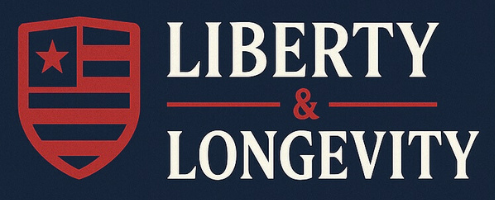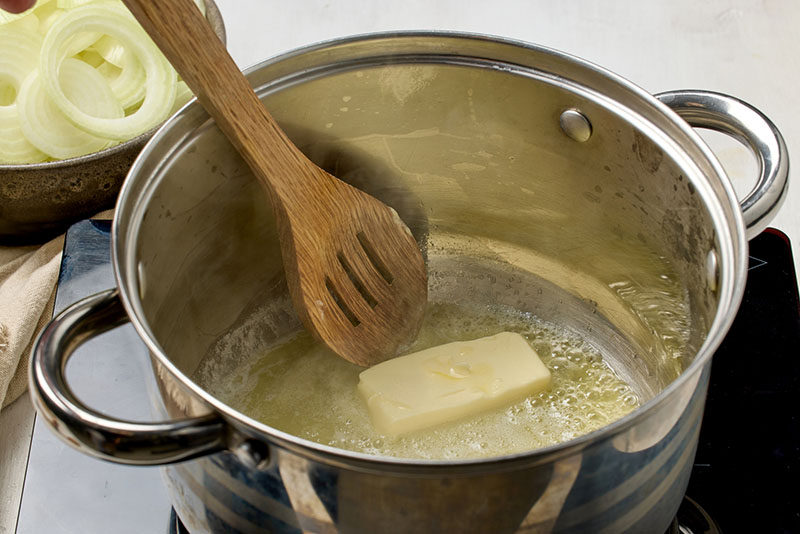Briefing:
For decades, butter and animal fats were demonized. Margarine and seed oils were pushed as “heart healthy.” But now, science (and common sense) are proving what our grandparents always knew: old-fashioned fats might just be the healthiest choice in the kitchen.
How We Got Duped
Back in the mid-20th century, America was told that saturated fat was the enemy. Doctors, advertisers, and even the government said butter, beef tallow, and lard would clog your arteries.
Instead, we were sold margarine and vegetable oils — modern inventions marketed as cleaner, safer, and better for the heart. The food industry poured billions into the message. Families swapped butter for margarine, and fried chicken stopped sizzling in lard.
But here’s the dirty secret:
- Margarine is basically solidified seed oil — hydrogenated oils full of trans fats, which we now know are among the most dangerous fats ever created.
- “Vegetable oil” is a misleading name. It’s not made from vegetables at all — but from seeds like soy, corn, and canola, extracted with high heat and chemical solvents.
In trying to “eat healthier,” we traded real food for industrial products. And we’ve been paying the price in chronic inflammation, obesity, diabetes, and heart disease.
This Week’s Dispatch is Sponsored by Boomer Blooms
A better night’s sleep starts naturally. Boomer Blooms makes clean, low-dose CBD + Delta 9 THC gummies designed for real adults — no dyes, no junk, no grogginess.
Liberty & Longevity readers: try a $15 bag for just $5 with code LIBERTY at boomerblooms.com/shop
The Case for Old-Fashioned Fats
So why are butter, tallow, and lard making a comeback? Let’s break it down.
1. Nutrient Density
Old fats don’t just provide energy — they provide fat-soluble nutrients that modern oils lack.
- Butter: Vitamins A, D, E, K2 (essential for bone, eye, and immune health).
- Tallow (beef fat): Conjugated linoleic acid (CLA), linked to reduced cancer risk and improved body composition.
- Lard (pork fat): A natural source of vitamin D (especially from pasture-raised pigs).
These nutrients were once abundant in the human diet. Now, thanks to industrial oils, they’re rare.
2. Heat Stability
Cooking fats need to hold up under heat. Seed oils don’t. They oxidize quickly, creating free radicals and toxic byproducts.
- Tallow, ghee, and lard have high smoke points and remain stable at high heat.
- Butter is more delicate (good for baking and low-heat cooking).
- Olive oil is excellent for moderate heat or finishing dishes, but not ideal for deep frying.
Translation: Old fats cook cleaner, with less toxic breakdown.
3. Whole, Not Processed
Butter, tallow, and lard are minimally processed. You churn cream, you render fat — that’s it.
Compare that to seed oils: extracted with heat and hexane solvents, then deodorized and bleached to hide their smell and color. Which would you rather eat?
Busting the Myths
You might be thinking: “But I thought saturated fat was bad for the heart?”
That story is more complicated than it was made to sound. Modern research shows:
- Saturated fat alone doesn’t cause heart disease.
- The bigger problem is ultra-processed foods and refined carbs paired with unstable oils.
- People eating balanced diets with butter, tallow, and lard — especially from pasture-raised animals — don’t show the same risks as those on processed Western diets.
Practical Guide: How to Use Old Fats
Think of your fats like tools. Each one has its place.
- Butter: Best for baking, spreading, or light cooking. Adds flavor and nutrients.
- Ghee: Clarified butter with the milk solids removed. Perfect for high-heat frying and lactose-free.
- Beef Tallow: Excellent for searing steak, roasting potatoes, or frying. Gives incredible flavor.
- Pork Leaf Lard: Clean-tasting lard from leaf fat (not “bacon grease”). Amazing for frying or making flaky pie crusts.
- Olive Oil: Great for salad dressings, drizzling on cooked veggies, or gentle sautéing.
What About Margarine and Seed Oils?
Here’s the blunt truth:
- Margarine is just hydrogenated seed oil. Even if it’s labeled “trans fat free,” it’s still a factory product with no place in a real-food kitchen.
- Seed oils (soy, corn, canola, sunflower) are unstable, inflammatory, and stripped of nutrients. They may be cheap, but they’re costing us our health.
If you swap nothing else this year, ditch margarine and seed oils.
Why This Matters for Longevity
Inflammation is at the root of nearly every chronic disease — heart disease, diabetes, Alzheimer’s, cancer. One of the biggest hidden drivers of inflammation? The fats we cook with.
Switching from processed oils to traditional fats:
- Lowers inflammation
- Provides missing fat-soluble vitamins
- Protects your heart and brain
- Keeps cooking safer and tastier
This isn’t about eating a stick of butter a day. It’s about bringing balance back to your kitchen, using the fats humans thrived on for centuries.
Final Takeaway
We were sold a lie: that man-made oils were “heart healthy” and old fats were dangerous. The science now tells a different story.
Butter, tallow, and lard aren’t villains. They’re real, nutrient-rich foods — part of a balanced diet, not something to fear.
So skip the margarine. Toss the seed oil. Bring back the fats your grandparents trusted. Your body will thank you.
Sources for Further Reading
- Teicholz N. The Big Fat Surprise (2014).
- Harvard T.H. Chan School of Public Health: “Fats and Cholesterol” — hsph.harvard.edu
- NIH: “Conjugated Linoleic Acid (CLA) and Human Health” — ncbi.nlm.nih.gov
- Mayo Clinic: “Margarine vs. Butter: Which is Healthier?” — mayoclinic.org
- Weston A. Price Foundation: “The Truth About Saturated Fats” — westonaprice.org


